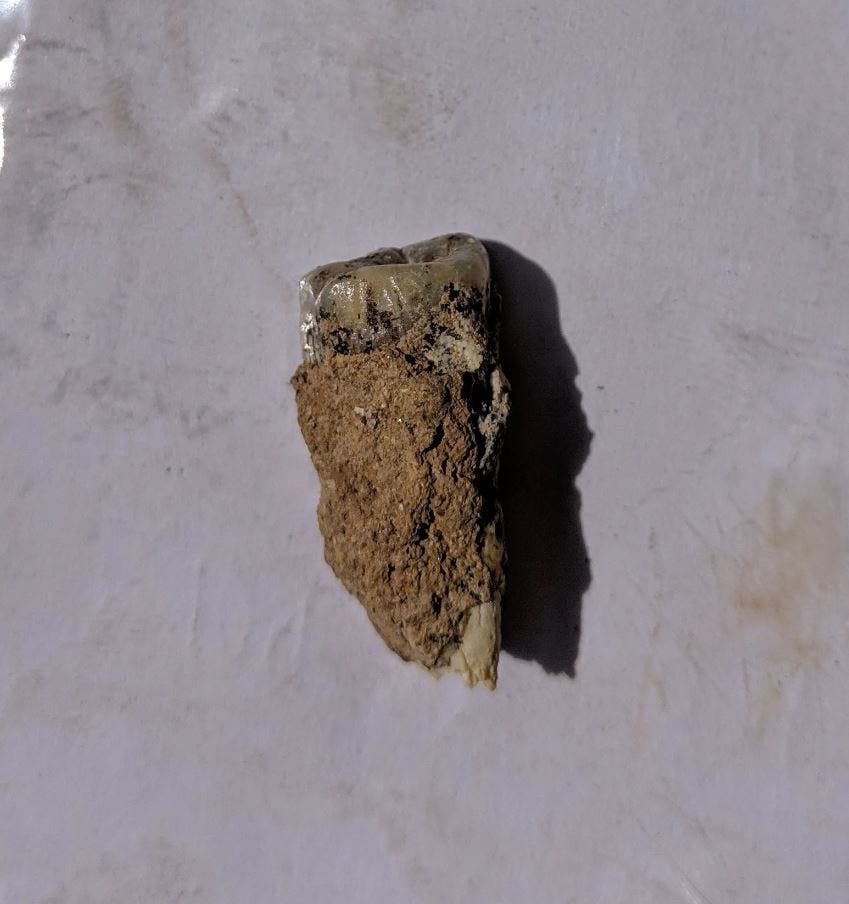A fossilized human tooth is helping us better understand how and when early humans left Africa.
The 1.8-million-year-old tooth was found at a site in Georgia in the South Caucasus. Its discovery highlights that the site was, at one point, one of the earliest prehistoric settlements that archaic humans (one of our prehistoric ancestors, Homo erectus) established in Europe and, perhaps, anywhere outside of Africa.

Stone tools and animal remains were previously discovered at this site, known as the Orozmani archaeological monument, but this is the first time that Homo erectus remains were found here. Previously, human skulls dated to around the same period of history were uncovered at the nearby town of Dmanisi during digs in the 1990s and early 2000s.
The findings showcase the fact that the South Caucasus mountains were one of the first places where early humans settled after migrating out of Africa.
Ancient pioneers
“Orozmani, together with Dmanisi, represents the center of the oldest distribution of old humans — or early Homo — in the world outside Africa,” explains a press release from the National Research Centre of Archaeology and Prehistory of Georgia which announced the discovery of the tooth.”The implications, not just for this site, but for Georgia and the story of humans leaving Africa 1.8 million years ago, are enormous,” said British archaeology student Jack Peart, who first found the tooth at Orozmani. “It solidifies Georgia as a really important place for paleoanthropology and the human story in general.”
The tooth was discovered by a research student who was part of the team digging at the site. The team’s senior paleontologist confirmed it was a hominin tooth, after which it was dated as being between 1.77 and 1.84 million years old.
Giorgi Bidzinashvili, the excavation team’s scientific leader, told Reuters that the tooth likely belonged to a “cousin” of Zezva and Mzia. These are the names given to two nearly-complete fossilized skulls, dating to around 1.8 million years ago, previously discovered in Dmanisi.
To date, the oldest-known archaic human fossil dates to around 2.8 million years ago, and consists of a partial jaw discovered in Ethiopia. Modern anatomical humans, Homo sapiens, the species we reading this belong to, are believed to have emerged around 300,000 years ago somewhere in Africa. From here, they spread through the rest of the world.
Something similar may have happened to previous species of humans, most notably a hunter-gatherer hominin named Homo erectus — one of the, if not the, first species of hominids to walk upright. Groups of Homo erectus likely started migrating out of Africa sometime around 2 million years ago. Ancient tools which were found in China are the oldest evidence of the presence of Homo erectus outside of Africa (these were dated to about 2.1 million years ago), but the novel tooth and the skulls previously uncovered in Georgia are the oldest remains of early humans ever found outside of Africa.
The team started excavation efforts at Orozmani in 2019, but had to suspend their expedition during 2020 because of the pandemic. They renewed their efforts last year. Alongside the tooth, they also discovered ancient tools and fossils of extinct animals such as saber-toothed cats and Etruscan wolves. Recently, excavations in Georgia have also uncovered the remains of one of the oldest examples of hunting dogs ever found, also dating from around 1.8 million years ago, at a site in Dmanisi.
Although of modest size, this tooth can help us work out some big questions. The findings give us more data to flesh-out what we know of the evolutionary history of humanity — a story that’s around 7 million years old.






